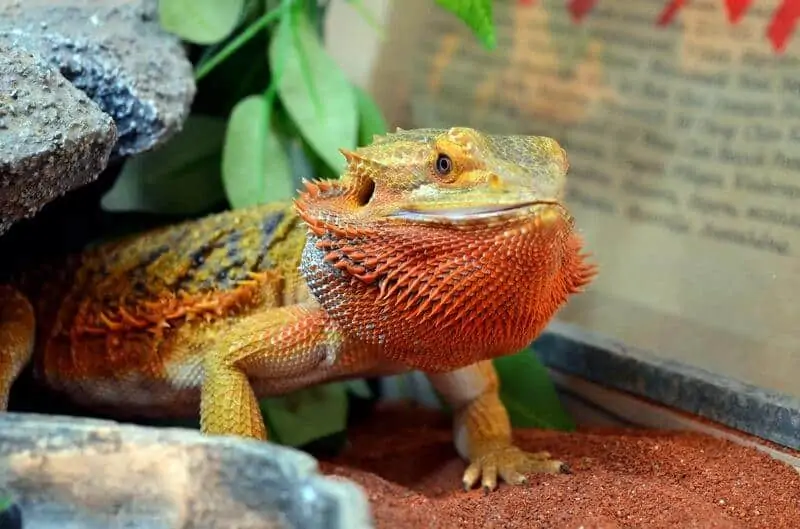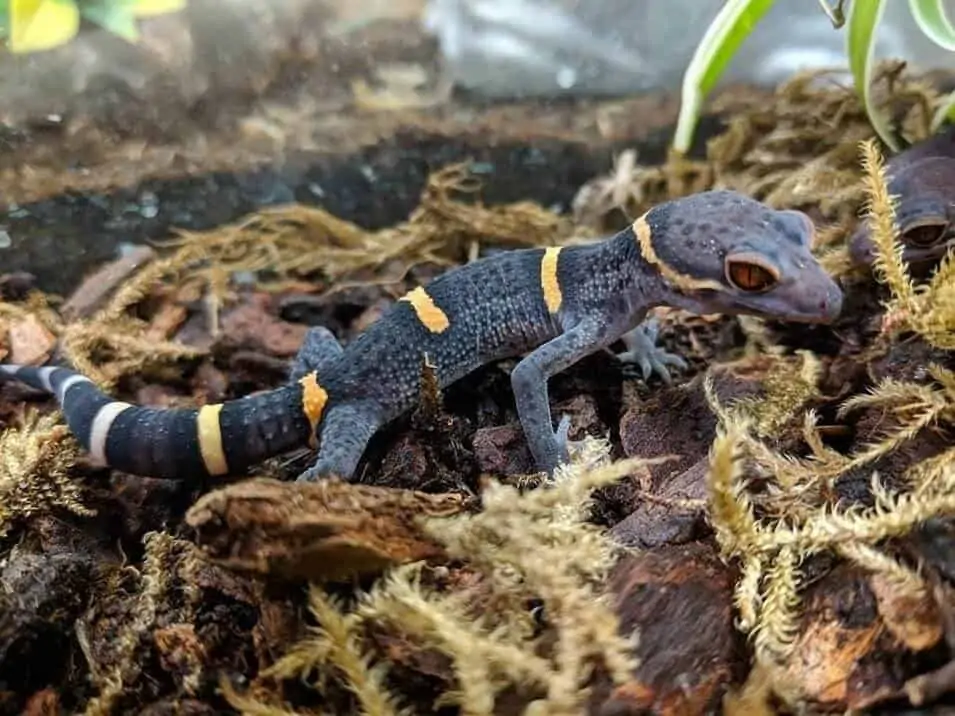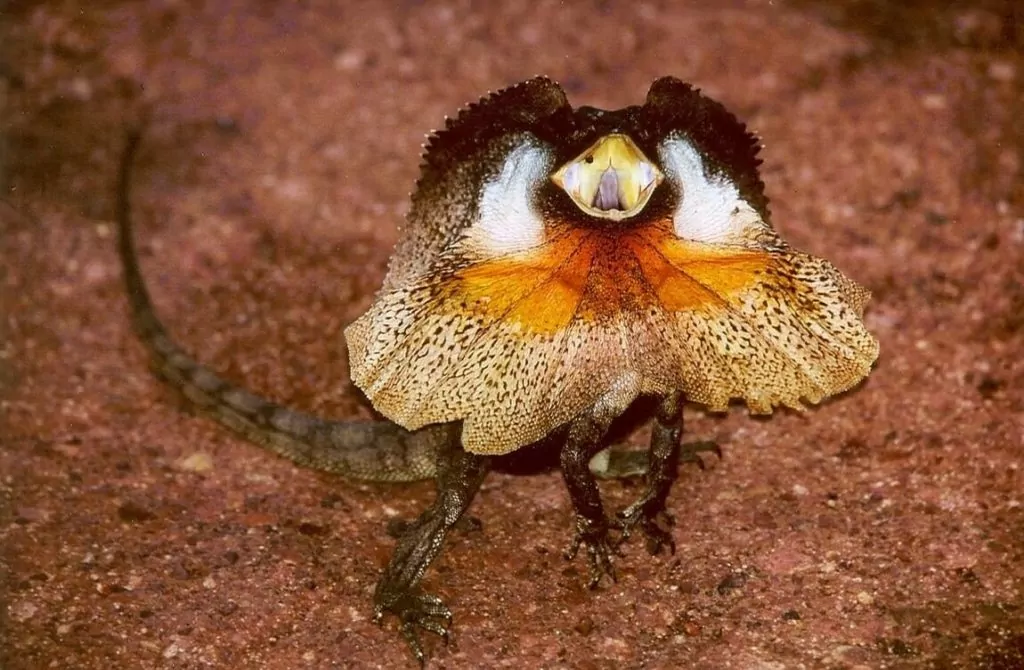Figuring out why your bearded dragon is digging can seem a bit tricky at first, but it’s actually quite simple. While this behavior might take you by surprise or even give you a scare, most of the time there’s a perfectly normal reason behind it.
This guide will go over why bearded dragons dig or burrow in the substrate of their enclosure, and help you determine if it’s something to worry about.
Table of Contents
Is Digging Something To Worry About?
For the most part, seeing your bearded dragon digging around in substrate material is not a cause for concern. However, there are some exceptions.
In the wild, these reptiles come from arid deserts, woodlands, and savannahs. Diggable sand and soil are readily available, and they’re known to take advantage of their surroundings for many reasons. In most cases, it’s perfectly normal behavior that helps with survival and comfort.

The same is usually true for a bearded dragon digging in captivity. But it all depends on the situation and how the behavior started.
If you see your beardie digging regularly, it’s likely fine. Your bearded dragon might discover that it can dig in the substrate once they get comfortable. After that, it can become a regular thing!
But if you notice that the digging is suddenly more frantic, it could point to an issue you can’t see. It varies, and you must use your instincts and what you know about your bearded dragon to assess the situation.
Why Is My Bearded Dragon Digging?
There are many possible reasons why your bearded dragon is digging. Some are innocent and don’t require intervention on your part, but others might indicate that you need to take action to help your beardie live more comfortably.
Here’s a breakdown of some of the most common reasons why bearded dragons dig in their enclosure.
1. Nesting
If you have a female bearded dragon, her digging might be her way of nesting. Females are usually sexually mature at around two to four years of age. However, some are ready to nest and lay eggs after becoming a year old.
The interesting thing about bearded dragons is that they can lay eggs without males in the same enclosure. They aren’t fertilized and don’t result in baby beardies. But she doesn’t know that. All she knows is that the eggs are coming!
When that time comes, female beardies go into nesting mode. Their instincts kick in, and they work to prepare a site for laying eggs and raising young.
Digging can become noticeably more pronounced. Your bearded dragon might dig faster and harder than usual, making her behavior stand out.
But that’s not all.
It’s common for nesting beardies to dig multiple burrows. They want to find the best nesting spot possible, which often requires trial and error. You may see several half-started or fully-formed burrows forming throughout the enclosure.
Digging that’s related to nesting usually occurs during the breeding season. It starts at the end of winter, around March or April, and lasts until around November.
2. Establishing A Hiding Spot
In the wild, bearded dragons have many would-be predators. They have a variety of defense mechanisms, such as the beard they puff up when faced with danger. But before things escalate to that point, they usually find a hiding spot.
If no natural hiding spots are available, they burrow into the soil to create one. It helps them stay out of sight and is where they go to feel safe.
So why is your bearded dragon doing this in captivity? After all, there are no predators in their human-made habitat.
Seeing your beardie dig a hiding spot in their enclosure isn’t a good sign. The behavior typically occurs whenever their habitat lacks a suitable hide. You might have plenty of natural coverage or even a fake cave. But if those aren’t comfortable enough for your lizard, they won’t use them. Instead, they’ll opt to create their own hiding spot through digging.
So what should you do about this?
It’s simple, upgrade the enclosure with a real hide. Get one that’s big enough for their entire bodies to fit. They should also have room to turn around and get cozy.
Another thing you should consider is why your beardie feels the need to hide at all! Every bearded dragon enclosure needs a good hide, no matter how calm your home is. It’s about creating a safe space the reptile can use whenever they need it.
But if they have a reasonable space to hide and the digging occurs suddenly, your bearded dragon may be suffering from stress and anxiety. It’s a good idea to figure out why and take action to keep your beardie calm and comfortable.
3. Cooling Off
Temperature is another reason why your bearded dragon might be digging. These reptiles are cold-blooded animals that need to thermoregulate throughout the day. That’s why you need basking lamps to create a temperature gradient.
These creatures like to have a body temperature between 95 and 102 degrees Fahrenheit. They’ll move around the tank to make adjustments as needed.
If they’re too cool, they might go into the basking lamp, which should be up to 104 degrees. When they feel hot, they’ll go to the opposite side of the tank, where ideal temperatures are around 84 degrees. They may also take cover under plants or cool off in the hide box.
When your beardie starts digging to cool off, take it as a sign that your habitat setup needs some tweaking. Burrows can be two or three degrees cooler than the surface of the substrate. That means your temperature gradient is off.
It’s a good idea to install two thermometers in the enclosure. Have one on the hot side with the basking lamp and another on the cooler side. Maintain the preferred gradient at all times.
Consider upgrading the decor and giving your beardie more coverage to cool off without digging into the substrate. Use more plants, add shady structures, and install a cooling water pool.
4. Feeling Cramped
Digging could also indicate that your bearded dragon’s habitat is too small. It’s a response to the stress caused by feeling cramped.
Digging isn’t always an attempt to get more freedom or roaming space. Instead, it’s usually a coping mechanism to combat the anxieties of feeling trapped.
Alternatively, it could be that the enclosure is so tiny that outside sights and sounds are affecting the beardie’s comfort. If your lizard has no choice but to be pressed up against the glass to relax, they have more exposure to loud noises and bright lights in the room where the habitat sits. That could cause them stress, forcing the reptile to dig in an attempt to get some space.
Expert Tip: A bearded dragon’s enclosure should be no smaller than 48 inches long, 24 inches wide, and 24 inches tall. Anything smaller than that will cause issues. That said, it’s always better to go bigger if you have the space.
A bigger tank allows you to provide more enrichment items. It also lets your beardie roam around and get away from any outside noises or lights they see.
5. Brumation
If you live in an area that experiences cold weather, digging in the substrate could be your bearded dragon preparing for brumation. Brumation is similar to winter hibernation you see in mammals. The reptile will become inactive.
Their behavior becomes sluggish, and they stay away from the basking light. Most beardies also have decreased appetite.
In the wild, brumation usually occurs when temperatures dip below 50 degrees Fahrenheit. Even with good lighting and solid temperature settings, bearded dragons in captivity sometimes brumate between November and February.
Before they brumate, they will dig a burrow to “sleep.” They may also choose to use the hide box or take advantage of any secure shelter in their habitat.
Brumation is perfectly normal, and it isn’t a cause for concern. Some owners panic because of the sudden change in behavior and the sudden onset of brumation. Whether or not a bearded dragon goes into brumation depends on many factors.
You may not see your lizard brumate for years. But then, a sudden cold snap during the winter triggers this biological process.
The best thing you can do is ensure that your bearded dragon has plenty of space and several spots to “sleep.” Brumation doesn’t include deep sleep like hibernation. These lizards will get up and move, but they’ll be far less active than before.
6. Egg Laying
Earlier, we mentioned that female bearded dragons will dig in the substrate as part of their nesting process. Eggs don’t always result from that process, but their natural instincts force them to prepare anyways.
If your bearded dragon does fill up with eggs, you need to take action. Whether they’re fertile or not, laying those eggs is taxing on your female beardie.
It’s a good idea to create a lay box. You can put it in the enclosure or set up a separate laying enclosure. The hide box should have a moist substrate.
The moisture will make the egg-laying process easier. A lack of moisture could cause the eggs to get stuck, which can be lethal without surgical intervention.
Give your bearded dragon high-quality meals with plenty of calcium supplement powder to keep her strength up.
If the eggs are fertilized, you’ll need to remove them from the enclosure. Female bearded dragons typically lay eggs in the burrow they dig out before lightly covering them with the substrate. They may stand watch over the eggs for a few days before abandoning the nesting spot.
To promote hatching, move the eggs to an incubator.
Why Is My Bearded Dragon Digging In The Corner?
It’s common for owners to observe their bearded dragons digging in the corner. In most cases, the behavior is temperature-related or preparation for brumation.
They choose corners because they offer more space and direct contact with two glass walls. Glass walls are usually significantly colder than the rest of the tank, giving your beardie the cooling effect they want.
Corners are often free of decorative structures as well. As a result, the lizard has more room to dig a deeper burrow.
There’s no need to worry about your beardie digging in the corner. However, there are some things you can do to save yourself some work later on. Consider beefing up the corners with some extra substrate material. Having that excess sand or soil can be beneficial for brumation.
Is Burrowing Normal Behavior?
It is completely normal for bearded dragons to burrow or dig. No matter why they’re doing it, digging is not out of the realm of beardie behavior. You might not be used to seeing it, but it’s something these reptiles do in the wild all the time.
There’s no need to stop it. However, you can address the reason why they’re digging. If it’s temperature-related or caused by stress, take action to make your lizard as comfortable as possible.
Allow them to dig as much as they need in the meantime. As long as there are no obstacles or injury risks, it’s fine to let them dig to their heart’s content.
Closing Thoughts
As you can see, it’s not hard to figure out why your bearded dragon is digging. And for the most part, it’s not something you need to worry about!
If you have any questions about the information above, send us a message or reach out to us on social media. We chat with our readers all the time!


